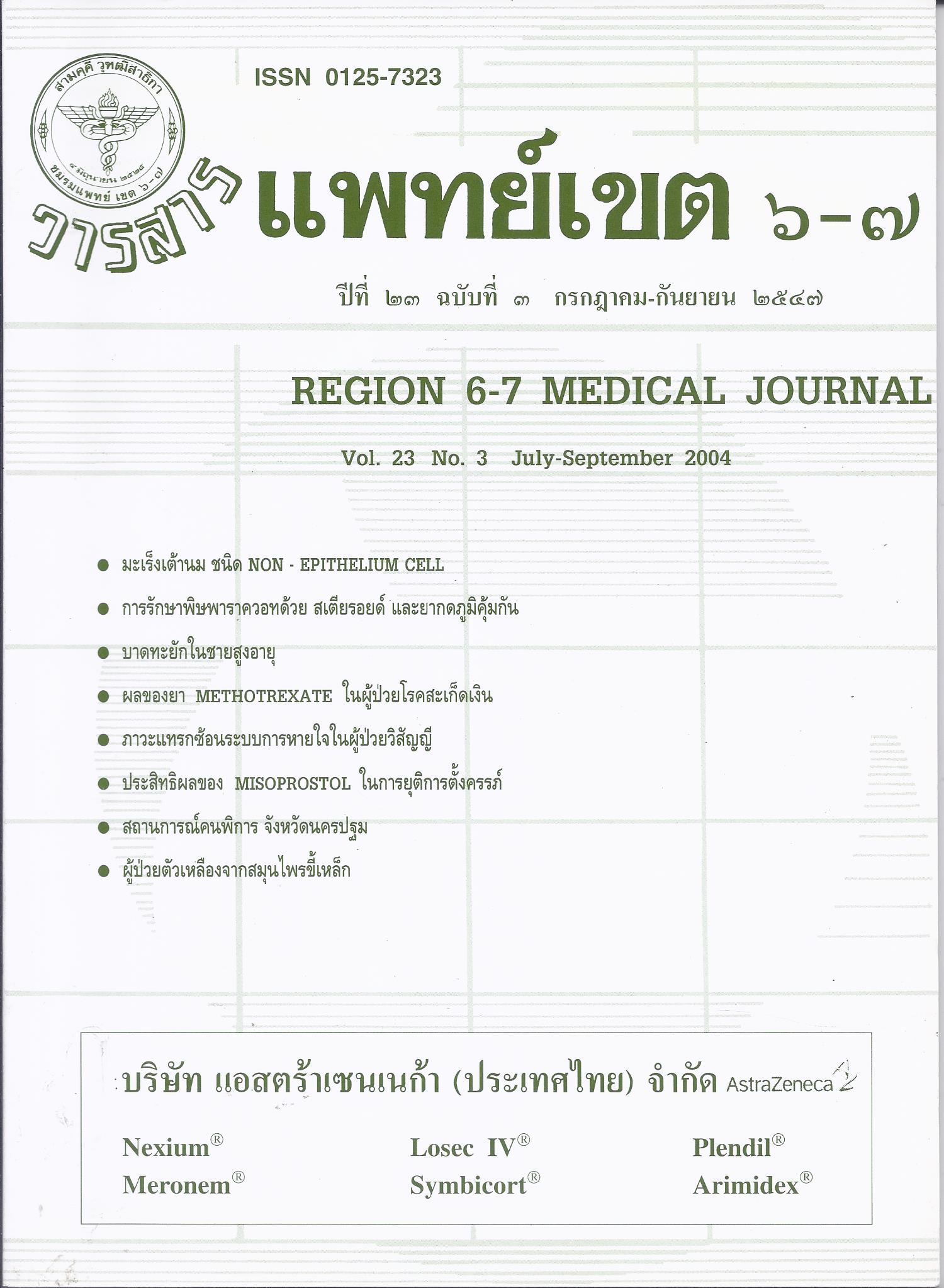ปัจจัยที่มีความสัมพันธ์กับการคลอดก่อนกำหนด ในโรงพยาบาลส่งเสริมสุขภาพ เขต 4 จังหวัดราชบุรี
บทคัดย่อ
Objective : To study the prevalence rate of premature labour, the factors that related to premature labour and the effect of premature labor to the new born infants.
Method : This study was a cross sectional study. 2,994 pregnant women gestational age 2 28 weeks who delivered in Health Promoting Hospital during January 2002 to April 2003 were chosen to be sample. Result : 73% of the sampIe’s houses located at Ratchaburi province. 44% were primigravida. The prevalence rate of premature labour was 11.6%. 78.9% of premature labours could not find out the causes. Factors that related to premature labour were twins pregnancy with Odd ratio = 8.54 (95% Cl of 5.122 - 15.27), inadequate antenatal care with Odd ratio = 4.90 (95% CI of 3.74 - 6.42) and teenage pregnancy with Odd ratio = 1.61 (95% CI of 1.18 - 2.20). The effect for the new born infants was asphyxia measured at 1 min with Odd ratio = 5.34 (95% Cl of 3.39 - 8.40) and measured at 5 min with Odd ratio = 7.17 (95% Cl of 3.14-16.39)
Conclusion : The prevalence rate of premature labour was 11.6%. The significant factors that related to premature labour were twins, inadequate antenatal care and the teenage pregnancy. The significant effect of premature labour to the new born infants was birth asphyxia.
Suggestion : Monitoring program for adequate antenatal care and program for adolescent to postpone pregnancy in teenage are the key success for reduce the prevalence of premature labour.
ดาวน์โหลด
เผยแพร่แล้ว
รูปแบบการอ้างอิง
ฉบับ
ประเภทบทความ
สัญญาอนุญาต
ลิขสิทธิ์บทความเป็นของผู้เขียนบทความ แต่หากผลงานของท่านได้รับการพิจารณาตีพิมพ์ลงวารสารแพทย์เขต 4-5 จะคงไว้ซึ่งสิทธิ์ในการตีพิมพ์ครั้งแรกด้วยเหตุที่บทความจะปรากฎในวารสารที่เข้าถึงได้ จึงอนุญาตให้นำบทความในวารสารไปใช้ประโยชน์ได้ในเชิงวิชาการโดยจำเป็นต้องมีการอ้างอิงถึงชื่อวารสารอย่างถูกต้อง แต่ไม่อนุญาตให้นำไปใช้ในเชิงพาณิชย์




